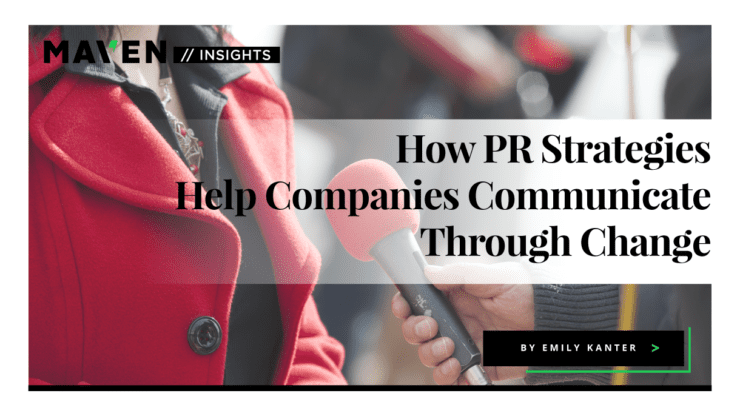In today’s Insight, we’ll be discussing how PR strategy can help companies communicate effectively through change.
Change is an inevitable and important way for organizations to grow and redefine themselves. Organizational changes can take many forms and may involve new structures, policies, personnel, or culture.
This year, as a result of the Coronavirus pandemic, we worked with companies that have experienced unplanned change and need to quickly pivot because of unexpected organizational events. With the right public relations strategy and tools, companies can be confident to lean in and embrace change.
Here are tips to ensure a smooth transition:
1. Establish Clear Goals and Objectives:
It’s important to set goals and objectives at the beginning of any communications plan. This states your intention for the project, establishes measurable goals, and sets the intended outcomes so the company and agency are on the same page from the start of the relationship.
2. Create a Strategy and Timeline:
Putting together a strategy and timeline allows the agency to identify and clarify target audiences and messages that need to be conveyed.
Additionally, it also allows the agency to plan tactics that will be used to engage audiences through various channels. Outlining these details in a timeline holds everyone accountable to meet goals and stay on track.
3. Identify Spokespeople:
Choose a spokesperson (or spokespeople) to comment on behalf of the company. It’s essential to deliver messages accurately and effectively to the public.
Select a spokesperson who is media trained (or willing to be media trained), has expertise in the subject matter, and has the authority to comment on topics within the organization.
4. Draft Clear Messaging:
It’s critical to have key messaging and talking points drafted in advance of a major launch or organizational change. Depending on the nature of strategy, the agency will draft separate messaging for each audience, ensuring the points that need to be conveyed are at the forefront.
5. Execute:
Once planning is complete and all parties are on the same page, the organization will feel confident to let the agency execute the strategy. The plan and messaging put in place will serve as a guide for media outreach and thought leadership coordination.
6. Measure Success:
Success can be reported in a variety of ways depending on what is most important for the organization. Evaluating the effectiveness of the PR strategy is essential to justifying if the goals set at the beginning of the process are met.
____________
Companies should not be afraid of organizational change. With the proper planning and guidance, conveying a big change to the public can be an exciting time for everyone.
Thank you for reading our Insight on how PR strategy can help companies communicate effectively through change. For more information on public relations, check out, “How to Communicate Around the Upcoming Election,” and, “Tips for Thought Leadership Pitching During Election Month.”
Posted In Public Relations
 Emily Kanter
Emily Kanter 